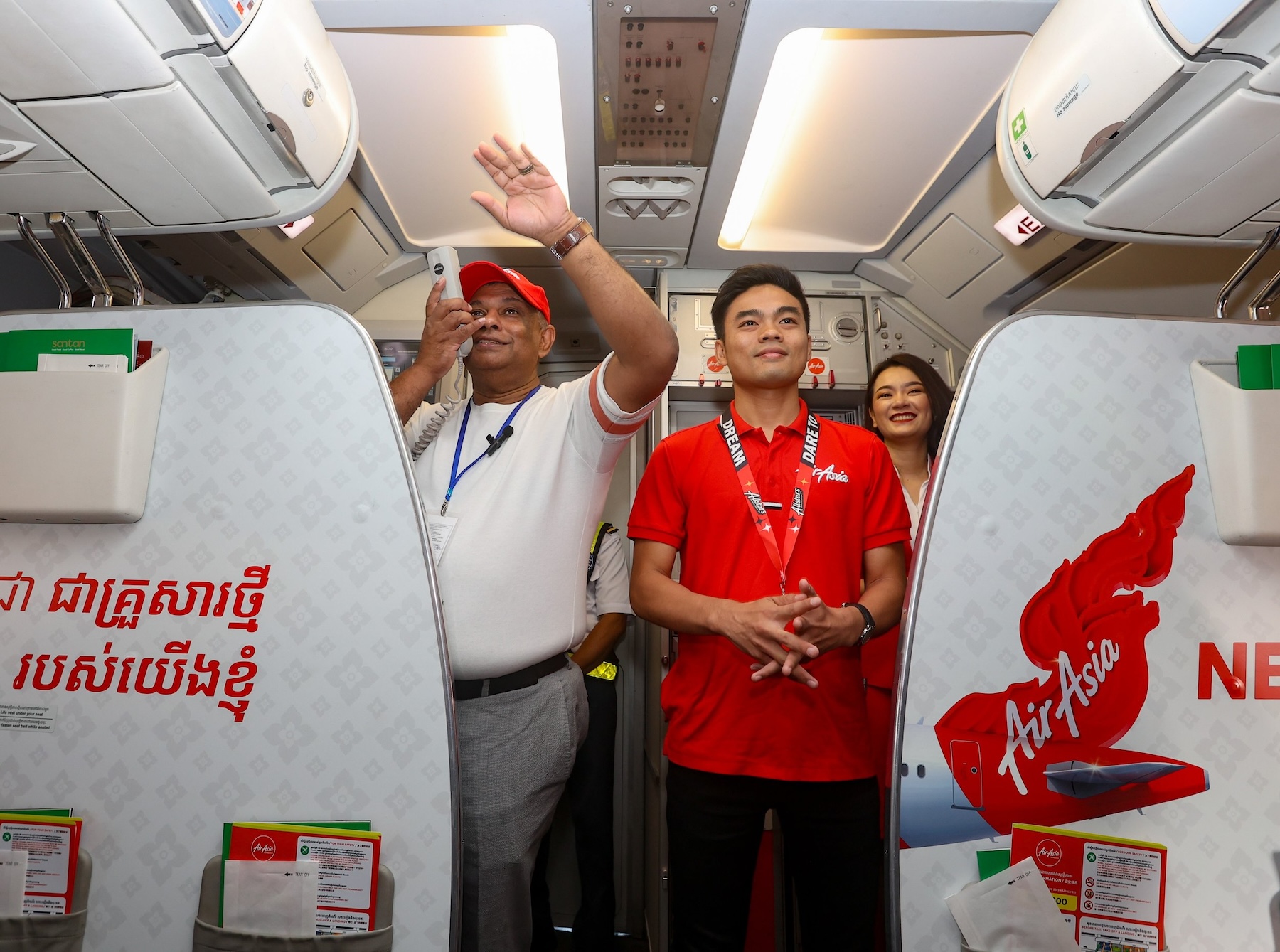
AirAsia Cambodia Makes First Flight
AirAsia Cambodia started operations on Thursday with a historic inaugural flight, KT102, connecting Phnom Penh, Cambodia's capital, to Siem Reap,…

A view of Boeing’s facilities at Boeing Field in King County, Washington. (Photo: AirlineGeeks | Katie Bailey)
On Wednesday, July 28, aircraft manufacturer Boeing held its second quarter earnings call for 2021, posting its first profit in nearly two years. This comes at a time when the industry recovery trend continues to accelerate forward following less travel restrictions, leading to more servable routes.
Boeing’s $567 million profit comes as a surprise to analysts, but can be attributed to the company’s growth from previous years in all segments; Commercial, Defense, Space & Security and Global Services. The success found this quarter ultimately increased the public’s trust, resulting in a 5 percent increase in Boeing’s stock after results were public.
In July of last year, at the peak of Covid-19 lockdowns, Boeing’s revenue totaled $11.8 billion, making the jump to $16.9 billion in today’s report, a 44% increase, overcoming analysts’ prediction by $5.1 billion. The company also overcame analysts’ predictions for earnings per share (EPS), estimating a loss per share of $0.79, but was outdone by the posted $0.40.
Boeing’s Defense, Space and Security segment performed very well, improving on revenue which is up 4 percent at $600 million from 2020, and earnings, which are up 60 percent from 2020 at $958 million. A few achievements that contribute to this success include the first successful unmanned refueling mission performed by Boeing’s MQ-25 Stingray, the continuous development of Core Stage’s for NASA’s Space Launch System for the Artemis 1 mission and the quick assembly of the Boeing T-7 Red Hawk Trainer front and aft sections.
In a memo addressing employees, Boeing’s CEO Dave Calhoun stated, “While we still have a ways to go before a full rebound, it is encouraging to see the commercial market improving, enabled by continued vaccine distribution and increasing travel demand, particularly in domestic markets.” The quick rebound of the current market has also proved beneficial to the company’s workforce, as statistics show staffing levels beginning to stabilize. The memo goes on to state, “Last fall, we planned to reduce the size of our workforce to about 130,000 employees by the end of this year. However, with encouraging recovery trends and our investments in our people, we’re now planning to keep our overall workforce size roughly consistent with where we are today, at about 140,000 employees. As we have done throughout the pandemic, we will also continue hiring in some parts of our business to fill critical skill positions and meet customer commitments. Going forward, the pace of the commercial market recovery, trade relations with China and our own performance will be key enablers to overall employment levels.”
One large contributor to the past few years’ poor performance was the Boeing 737 Max issues following the 2018 and 2019 accidents resulting in a death toll of 346 individuals, grounding the entire fleet.
A current issue the manufacturer is facing are setbacks with production of their Boeing 787. Undelivered aircraft will require additional rework which in turn will slow production rates of the aircraft to less than five a month.
Since returning to service in November of 2020, 30 carriers operating Boeing’s 737 Max have returned the aircraft to service flying approximately 95,000 revenue flights totalling 218,000 flight hours. The aircraft added an additional 280 aircraft orders in the last quarter. A few of the larger orders of the aircraft included 50 737 Max 8’s and 150 737 Max 10’s placed by legacy carrier United and 149 737 Max 8’s going to Southwest. Currently the manufacturer is pushing out 16 a month which will gradually increase to 31 by 2022.
Boeing also has their 777-X to look forward to, likely seeing the first delivery in 2023.
Chase Hagl grew up in Twin Falls, Idaho. His love and passion for Aviation landed him in Orem, Utah where he obtained a B.S. in Aviation Management with a minor in Business Management from Utah Valley University. Chase currently works as a flight attendant in Charleston, SC and is also the primary Inflight ASAP ERC representative for startup airline, Breeze Airways. His experience in the aviation industry spans back four years, working in areas including agriculture application, customer service, maintenance, and flight ops. In his free time, Chase enjoys road biking, astronomy, and flying.
Receive a daily dose of the airline industry's top stories along with market insights right in your inbox.

AirAsia Cambodia started operations on Thursday with a historic inaugural flight, KT102, connecting Phnom Penh, Cambodia's capital, to Siem Reap,…

Kenya Airways (KQ) has suspended flights to Kinshasa, the capital of the Democratic Republic of the Congo (DRC). This decision was…

Committees in the United States Congress have finalized their drafts for the latest version of the FAA Reauthorization Bill. The…



